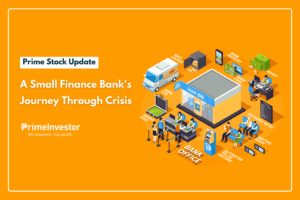Q Suddenly everyone’s talking about US bond yields surging. I see that the 10-year US government security is up by some 0.02 % to 1.57%. Why is this such a big deal?
While yesterday’s move isn’t big, what’s big is the US 10-year Treasury’s 43 basis point rise in the last one month. This means that, a month ago, investors in long term bonds issued by the US government were getting 1.13% by way of interest and now they’re getting 1.57%. That’s a 40% jump in returns from an asset that is regarded as one of the safest parking grounds for money in the world. Think of a global fund which is thinking of putting a billion dollars in US treasuries – it’s returns would now be higher by a cool $4.4 million compared to a month ago. Global central banks, sovereign wealth funds, pension funds and mutual funds park not billions but trillions of dollars in US treasuries, which is why this is such a big deal.

Q I begin to see the point. But why did the US yield jump suddenly?
Three factors seem to be behind this yield surge. One, with prices of commodities rising across the world led by oil, consumers are beginning to worry about rising inflation. US household inflation expectations over 5 years topped 2.5% this week, surging from near zero levels just a few months ago. When consumers expect inflation to rise, they demand a higher return from bonds to compensate for the falling value of money.
Two, the vaccine rollout in US and other economies is leading people to believe that economic growth will revive faster than expected. This will again stoke demand for commodities and inflation. In fact, this is causing bond yields to rise not just in the US but around the world.
Three, people also worry that if economies revive, central banks around the world will have little excuse to continue with their stimulus packages which have put trillions of dollars of free money in the hands of financial institutions. This could mean end of the party in financial assets that has been on since the global financial crisis.
Do read this interview by Dr Anantha Nageshwaran to understand why this ‘inflation tantrum’ is spooking markets.
Q But central banks are hotly denying that they will hike rates, right? Even our own MPC and RBI have said that they will keep their stance accommodative for ‘as long as it takes’.
Well, markets seldom wait for central banks (or MPCs) to act. They shoot and then ask questions (that is, price in events before they happen). As long as commodity prices and inflation expectations are rising, bond markets will continue to peg up yields. In India too, while RBI has been trying its utmost to keep government borrowing costs below 6%, it isn’t succeeding. Between February 11 and March 4, the 10-year g-sec yield in India has shot up from 5.94% to 6.21%.
This apart, there’s fear that even if global central banks do not actually get down to raising rates for a long time, they will start to withdraw some of the special liquidity measures that they had announced during Covid-19. Tightening liquidity in itself can cause short term interest rates to spike. In India, despite all the reassurances about remaining accommodative, RBI has announced that it would raise the Cash Reserve Ratio for banks from 3% to 4 % by May 2021, sucking out an expected Rs 1.37 lakh crore from the market.
Q Okay, but why should a rise in bond yields send stock markets into conniptions? Crazy moves we’re seeing in the US S&P 500 and India’s Nifty!
Bond yields affect stock prices in three ways.
- One, at a very basic level, returns on safe instruments such as government bonds set the bar for stock returns and thus valuations. You may be familiar with textbook stock valuation technique of discounted cash flow (DCF) of a company’s stock.The discount rate is usually the rate of interest you would earn on a risk-free investment (aka a government bond). So when risk-free instruments offer better rates, this automatically reduces the price you would be willing to pay for a stock today).
- Two, rising yields on safe instruments also make (sane) investors rethink their asset allocation. They pull out of riskier assets and put it to work in safe ones. Imagine if the Indian government were to announce on March 31 that you will get a 9% return from the 5-year NSC or the PPF (No won’t happen, but just to illustrate). Won’t that make you think twice about increasing your SIPs in equity funds next year and consider a government-backed scheme?
Global investors too think the same way. When instruments they perceive to be very safe (like US treasuries) offer better returns, they pull out money from riskier assets (like equities or junk bonds).
- Three, any attempts by global central banks to normalize their stimulus or withdraw liquidity from markets can also mean an interruption in FII flows into emerging markets. For the last decade or so, short term investors like hedge funds have been able to borrow at near-zero or negative rates in the developed markets, pump that money into riskier markets like equities and pocket a neat profit from this trade (called a ‘carry’ trade). Rising bond yields or waning stimulus efforts can make such trades unviable.
Q So, should Indian equity investors brace for such pullouts in India? The recent stock rally in Indian markets has been driven by FIIs, isn’t it?
Yes, you should. So far in 2021, FPIs have pulled money out of Indian bonds (net withdrawals of Rs 14,442 crore) while putting some money in stocks (net investments of Rs 43,021 crore). But there are some signs of equity pullouts in March.
However, past instances, like the taper tantrum of August 2013, suggest that Indian bond market see heavier FPI pullouts in a global crisis than Indian stocks. This is because Indian bonds attract more short-term investors than Indian stocks which have lately seen more participation from long-term FPIs. Refer this article.
If you have been worried because Indian stock markets are over-valued and wondering what could trigger a correction, this could very well be the trigger, though we don’t know how long it will take to play out. Don’t press the panic button. But if your equity allocations are above your long-term settings or you have a lot of low-conviction stock picks, reduce your allocations to fall within your comfort zone. Indulge in selective profit booking to protect your gains. This earlier article of ours can offer some tips.
Q So is it more worrying only for global bond investors or for Indian bond investors as well?
Rising bond yields can trigger a global selloff in bonds. Such phases are even more risky for emerging market bonds like India as the yield differential (which is a key motive for FPIs investing here) shrinks.
Between Jan 1, 2021 and today, the difference in the US 10-year treasury yield and the Indian 10 year g-sec yield shrunk from 500 basis points to 463 basis points thus reducing the attractiveness of Indian bonds. Sharp FPI pullouts from Indian bonds can cause market yields on 10-year bonds and corporate bonds to spike even without any RBI or MPC action.
Don’t forget that RBI’s previous knee-jerk hike in policy rates in August 2013, which led to sharp debt fund losses, resulted from an episode of FPI pullouts and Rupee depreciation.
If you’re holding medium to long-term bonds, or funds that invest in them, this increases your risk of losing money. Though RBI may not talk about it, it is constantly worried about FPI pullouts from the equity or bond markets destabilizing the Rupee. Therefore, when yield differentials with the US shrink, there’s greater incentive for RBI or MPC to raise rates. Don’t forget that RBI’s previous knee-jerk hike in policy rates in August 2013, which led to sharp debt fund losses, resulted from an episode of FPI pullouts and Rupee depreciation.
Even if such knee-jerk reactions don’t happen, the combination of rising US bond yields and jittery FPIs strengthen the case for Indian rates to rise in the coming months. When rates rise, prices of older bonds fall. The longer the bond’s duration, the deeper the capital losses. So, if you’re a holder of long-term bonds (whether corporate or g-sec doesn’t matter) or funds that invest in very long-term bonds, you must brace for capital losses or even consider exiting, especially if you have invested with a short horizon.
See our earlier article on why debt funds are giving negative returns lately to understand this. But please remember that as long as you chosen your debt funds based on your time frame, you need not be unduly worried by these events. Just brace yourself for volatility.
Q In stock markets, we’re advised to jump in and buy when prices are falling. Shouldn’t I be buying long term bonds and bond funds now in a correction?
No, because the correction may have a long way to go. There are fundamental differences between the risk-return trade-of for stocks and bonds. In stocks, as long as you buy into a good business, even if your timing is not great (that is, you buy when valuations are high), there’s hope that your company’s earnings will justify the high price at some point in future and then deliver appreciation over it. But in bonds, if you buy at a high price, you take a risk to your capital when rates rise (the bond price will fall) and you don’t get higher coupon (as it is fixed and you entered at lower rates) to compensate for it.
Today, the odds are heavily weighted in favour of interest rates rising from here because they are already at their lowest levels in over two decades.
This makes the risk-return trade-off on long term bonds not worth it. The bond bull market in India, like the bull market in stocks, has gone on for six years. It may be a while before bond prices fall sufficiently for them to become attractive buys. Generally, history suggests that bond prices in India tend to bottom out when 10 year g-sec yields hover above 8%, today they’re at 6 %.
Q How is this going to affect gold as an investment for Indian investors?
Global gold prices have been falling quite sharply since US treasury yields began to rise. As gold competes with US treasuries as a safe-haven asset, the immediate reaction from global gold markets to the yield spike has been a fall in prices.
Should bond yields continue to spike though, this can trigger a sell-off both in global stock and bond markets (bond investors sitting on older securities will need to sell to avoid further capital losses from the yield spike). Such a global rout can rekindle safe-haven demand for gold.
Also, in recent years, global money printing by central banks has caused gold to move up along with riskier assets such as equities and bonds, as investors have been parking money in a variety of assets. Therefore, in the short run, worries about withdrawal of the stimulus are hurting gold. Bitcoin emerging as an alternative to paper money has also hurt gold with younger investors flocking to it.
Should bond yields continue to spike though, this can trigger a sell-off both in global stock and bond markets (bond investors sitting on older securities will need to sell to avoid further capital losses from the yield spike). Such a global rout can rekindle safe-haven demand for gold. Rising inflation can also restore gold’s value as an inflation hedge. Bitcoin will remain competition to gold, but it is unlikely to be bought by global central banks and its very volatility may deter investors in a risk-averse mood from flocking to it.
For Indian investors, gold also offers a hedge against Rupee depreciation triggered by any FPI pullouts. We will soon write more on whether to buy gold now!








31 thoughts on “What you should do about the US bond yield spike”
Hi Aarti,
I am invested in SBI Magnum Constant Mtrty Dir-G since last 10 months, and the returns are steadily dropping , now its barely 3.1%.
If I hold SBI Magnum for a 10 year period , will i be assured of at least average 7% returns which is the average returns on the papers held by SBI magnum
Hello Sir, SBI Constant is a long duration fund (and theefore par of our 5 year plus recommendation) and will definitely fall when yields move up. If you hold for a 10-year period, you will get FD plus returns then; but how much we cannot say 🙂 While you are right that theoretically the YTM should translate into returns, in reality it is plus or minus that based on market gyrations (duration related appreciation or depreciation). Most of the time for a 10-year period duration fund – it is YTM plus. thanks, Vidya
Hi Aarti,
I am invested in SBI Magnum Constant Mtrty Dir-G for last 10 months and since then my returns are steadily dropping and now barely 3.1%, if I hold SBI magnum for a 10 year period , will I be able to generate returns at least equivalent to the average papers which Magnum holds which is around 7%.
Maam, I am investing through SIPs for long term (5-7 years) in one Govt Securities Fund, two Corporate Bond Funds & one Banking & PSU Debt Fund. Considering your article, should I look at other options in Debt funds? In addition, I am investing in direct equities & Equity MFs as well. So I wish to continue my allocation for Debt MFs. Should I be looking at alternate Debt MFs? Your advise please.
Thank you
Hello Sir, please stick to time-frame based investing in debt (your categories are fine for the said time frame) and use some liquid/ultra short at all times to keep volatility low. Learn more about different categories of debt here: https://www.primeinvestor.in/debt-fund-category-that-are-the-best-for-you/ thanks, Vidya
Please comment on continuing Investments in a long term gilt fund like SBI CONSTANT MATURITY fund in the current scenario as an alternative to VPF . My goal is 5 years away.
For a 5 year goal, holding the fund is fine. But be prepared for 1-year losses too if yields continue to move up. thanks, Vidya
Thank you. Am I right in concluding that current bond fund holders in Liquid/MM/Low duration/UST/ST/Banking&PSU are OK and Corporate Bond funds at worst will only be mildly impacted ?
Thanks
Broadly yes. But it would be better to check maturities of funds you hold irrespective of category. Sub 1 year would be best
Please clarify the likely impact on Corp Bond and Banking & PSU Bond funds since many of us hold such funds.
I guess liquid, UST will rise a bit. Is that correct?
All bond funds even short term may see some losses in short term, but ones with short maturity will be quick to recoup. If holding corp bond or psu funds check for maturity. Less than 1 year best to protect capital
Hi. I have a good allocation towards HDFC Corporate bond fund and Axis PSU and Banking debt fund. I had invested based on your time based portfolio of 3 to 5 years and 5 to 7 years. Based on this article, should I get withdraw? I am a bit confused and worried at the same time.
If you have a 3 to 7 year horizon in mind you need not worry. But you may face short term volatility.
How would you assess the passive funds in debt space that invest in Government papers and SDL’s using a roll down strategy, where investments mature in 5-6 years from now? Considering an interest rate risk, is it advisable to invest in such mutual fund schemes, with the intention to hold till maturity?
If you wait for a few months may get better yields. But if you hold till maturity you need not worry about capital losses.
Comments are closed.